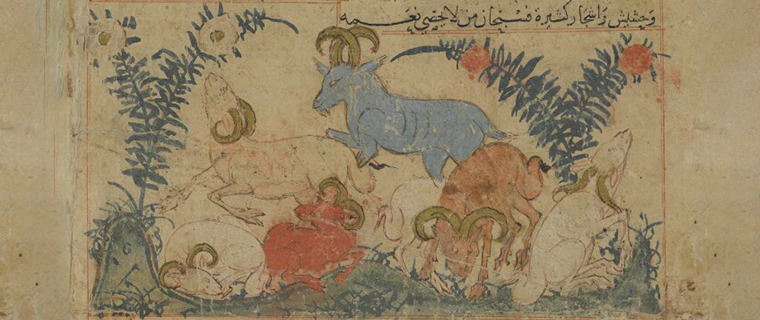
In ancient times, the world was believed to be governed by the four elements of fire, water, earth and air but the Islamic Golden Age heralded a new approach – one that was based in science.
The natural sciences flourished under Islam; scientists conducted experiments and classified and categorized the natural world. This was helped by the introduction of paper – which had been learned from the Chinese – and which facilitated the spread of knowledge and learning. Texts from the ancient world, particularly those of Greece and Rome, were translated into Arabic, having been forgotten by the West, and these formed a foundation on which to build new knowledge. Science was also supported by Islam. In the Hadith (sayings of the Prophet, PBUH), Abu Hurairah reports that Muhammad said: "Whoever takes a path upon which to obtain knowledge, Allah makes the path to Paradise easy.”
For those early Muslim scientists, medicine and astronomy were of paramount importance, and Qatar National Library holds various manuscripts from the Golden Age which relate to these subjects. Other disciplines were also explored, though, including zoology and the natural world.
Qatar National Library has two such manuscripts: "The Wonderful and Weird Among Creatures and Beings" from the 13th century CE and "The Life of Animals" from Mamluk Cairo in 1452 CE.
The first manuscript, "The Wonderful and Weird Among Creatures and Beings" was written by Zakarīyā bin Maḥmūd al-Qazwinī, who is thought to have been born in modern-day Iran, although he is believed to have been of Arab descent. This beautifully illustrated work, is more fantastical, describing creatures of the heavenly world and mythical animals like the phoenix and unicorn, along with trees, plants and a variety of animals like elephants, lions and deer. Al-Qazwinī also writes about the origins and types of wind, the land itself and the people who live upon it. The full manuscript is available on our Qatar Digital Library here.
The second manuscript, "The Life of Animals", was written by Kamal ud-Din al-Damiri (circa 1341–1405), an Egyptian tailor turned scholar, it comes in three versions, the lesser, the greater and a middle version. QNL holds, in its Heritage Library, two complete copies of the greater version including a fine Mamluk copy, which feature descriptions and information of more than 1,050 animals – predominantly mammals and birds – arranged alphabetically.
Some of the creatures have repeated entries, owing to synonymous names or where an animal has different names for the young and adult version of the creature, and the entries differ in length; the longest entry, running to 11 pages, is that of the lion. Interestingly, the entries do not contain themselves to just a description of the animal, but also speak about its place within Islam, whether it is mentioned in the Hadith, and whether it can be used in medicine or eaten, in accordance with Islamic law. To explore al-Damiri’s work, click here.

Add new comment